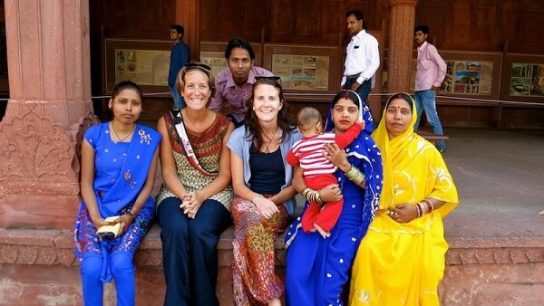No one knows why Machu Picchu exists. It may have been built as a resort for Incan royalty or as a retreat specifically for the king. It may have been a holy place.
Historians do believe, no matter its purpose, that walking the Inca trail to Machu Picchu was considered a spiritual pilgrimage for the Incan people.
The Inca Trail today is 26 miles long and begins outside of Ollantaytambo, though in Incan times the journey likely started in Cusco and took ten days to complete. Now, travelers from all over the world finish the trail in four days, walking up incredibly steep mountain passes that, at the highest elevation, reach almost 14,000 feet.
Machu Picchu
Our trek on the Inca Trail was the first thing Brian and I booked when we began planning our trip. It’s the whole reason we decided to start our travels in South America. We were excited for it to finally happen.
On the morning that our trek began we were picked up at 5:30 a.m. by our tour company. We loaded into a van with the other members of our group and were driven to the start of the trail.
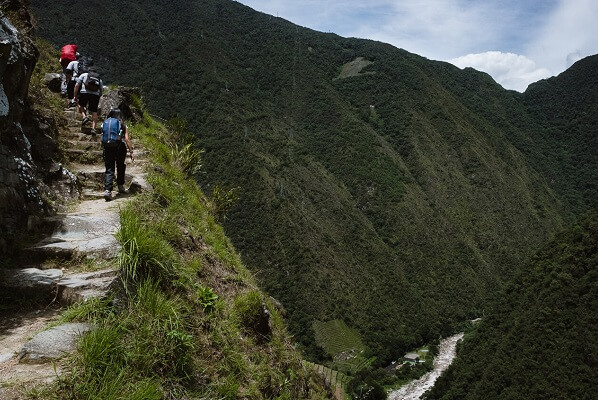
Snapshots from the beginning of the Inca Trail
After a passport check by the Machu Picchu park service (and a special Inca Trail stamp to boot), we began a five-hour walk to our first campsite. The trail began on a gentle uphill slope and we talked with the other trekkers in our group: a couple from Chicago, an Indian couple living in Boston, a traveler from Kuwait, a man from California, and a woman from Korea.
We walked at a comfortable pace and I practiced my Spanish with Juan, the assistant guide. He told me about his village and a bit about his life as a guide on the trail.
The scenery was stunning. The mountain’s harsh and jagged, snowcapped peaks peeked through the clouds from time to time. The trail wound up and through a few small villages, past children playing soccer and women selling bottled water and snacks to trekkers.
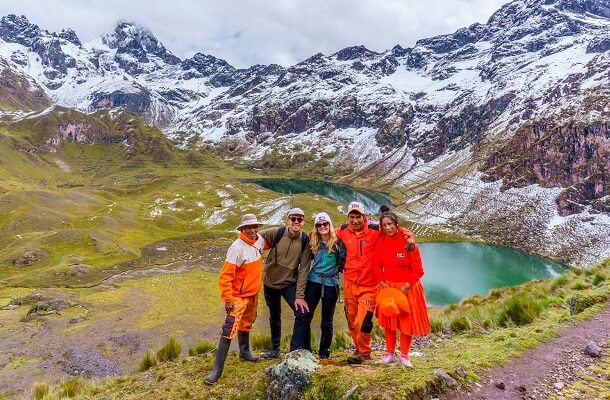
Stunning scenery and locals selling snacks and water to trekkers
After a few hours of hiking, we passed an Incan ruin. There are several Incan ruins along the trail which historians believe were built as resting places for the Incan people as they journeyed to Machu Picchu. Our guide, Will, explained that this ruin in particular was probably used as a military checkpoint to monitor travelers on the trail.
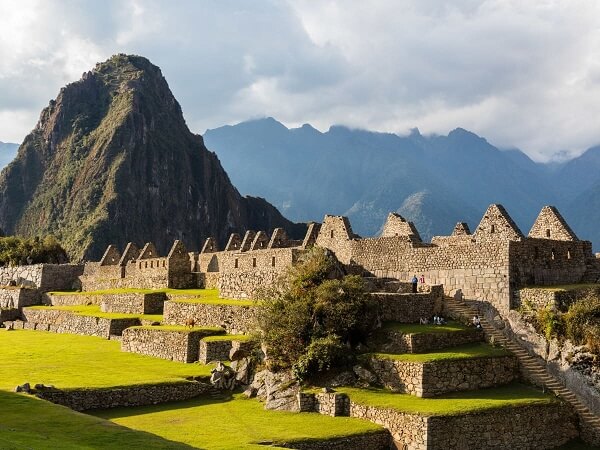
Scenes from the first ruins
In the early evening, we arrived at camp, the porters had already assembled our tents. Each day 200 trekkers and 300 porters and guides begin hiking the Inca Trail. We were a group of nine trekkers, two guides, fourteen porters and one chef.
I was amazed at the strength and endurance of the porters. They rise very early in the morning, carry a heavy load all day, and then work into the night setting up tents, serving food, and washing dishes. Though the weight that porters can carry is regulated by the government, I’d read that many porters are still forced to carry unreasonably sized loads, aren’t fed properly, and are paid very poorly. Brian and I chose Peru Treks because of their reputation for treating their porters well. There are cheaper companies out there but when you pay pennies for a tour the porters will likely get the short end of the stick.
Dinner was served at 7 p.m. and the food was wonderful. Afterward, we emerged from the dining tent to a sky filled with thousands of stars. It was the first good glimpse I’d had of the stars in the southern hemisphere. Our guide pointed to the Southern Cross constellation and explained that, to the Incans, it represented the gateway between the physical world and the world beyond. To the Incan people, those stars were the center of the universe.
The next morning
The next morning we awoke very early and prepared to tackle our hardest day on the trail, a difficult climb up and over Dead Woman’s Pass, an altitude of almost 14,000 feet.
We climbed slowly up never-ending stone stairs built by the Incans and chewed coca leaves to combat the effects of elevation. Step by step we huffed and puffed our way up into the clouds until finally, with lungs almost bursting, we reached the top of Dead Woman’s Pass.
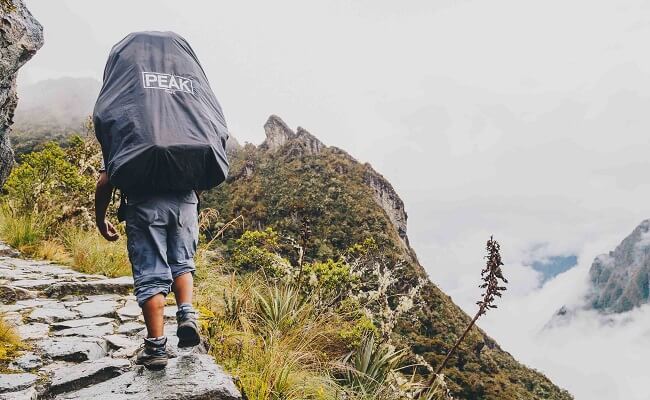
Clockwise: Brian climbs the steep stairs, coco leaves, view from the top, a porter climbs the pass
Maybe it was the elevation or my elation at summiting the pass, but as I started the steep, downhill walk towards camp I thought about all I’d learned of the Incan culture and how it innately made sense to me. Our guide, Will, had explained earlier in the day that the Incan religion consisted of three things: Love, knowledge, and reciprocity. Above all else, these were the things that mattered to the Incan people. Really, what else is there?
Their Gods, too, were the mountains, sun, moon, and stars. Nature was holy and sublime. This I understand deeply because nature is holy to me as well.
As I continued my walk downward, the fog creeping low between the deep green crevices of the Andes, I thought of a line I’d heard from who knows where- A song? A poem?:
The universe does not belong to you, you belong to the universe.
I think the Incans had this figured out.
To be continued…
Read part 2 about hiking the Inca Trail here.






